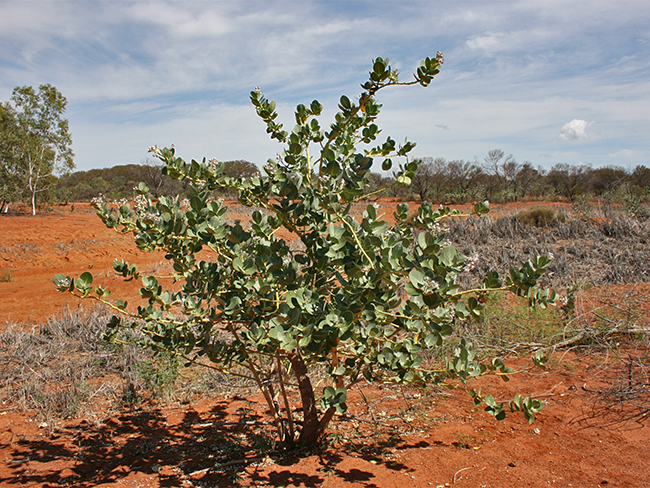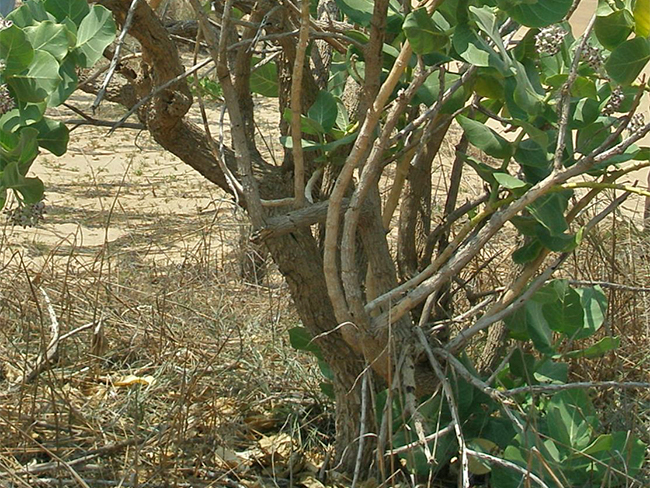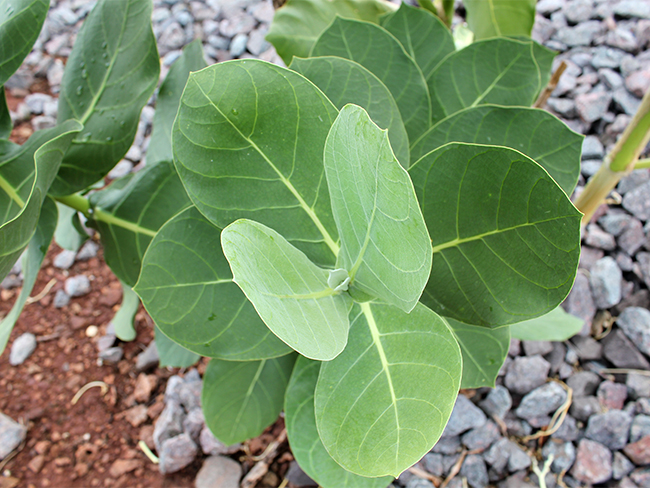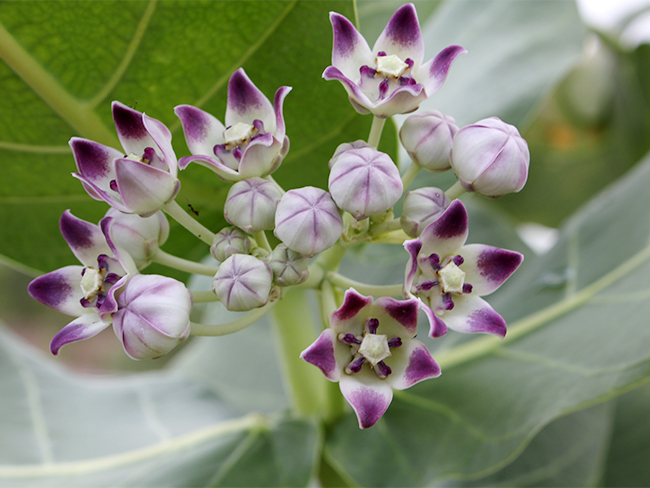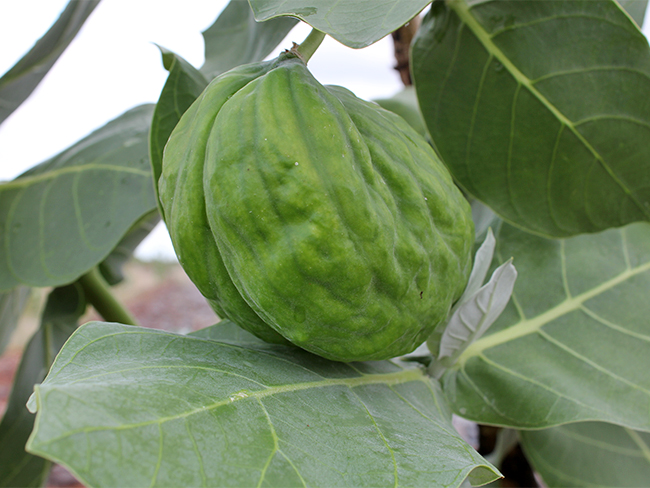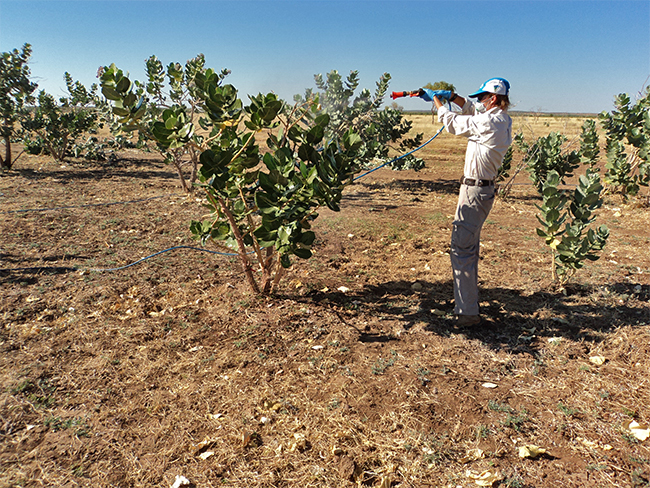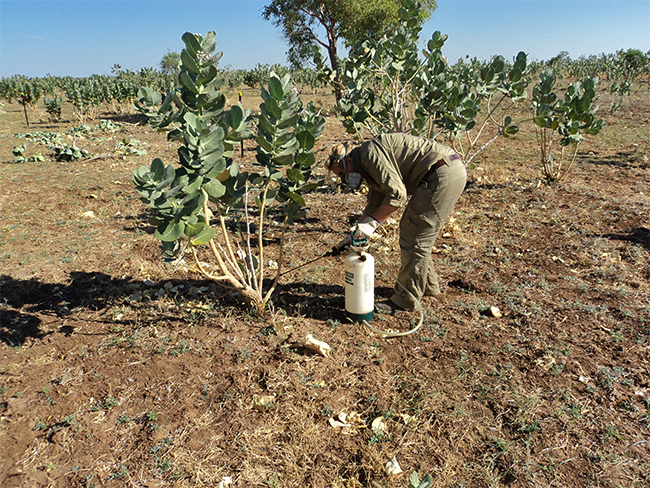Rubber bush
Scientific name: Calotropis procera
Declaration status: Class B (only declared Class B: South of 16°30' S latitude).
Rubber bush is native to tropical Africa and Asia.
It was probably introduced to Australia as a garden plant, or in the packaging of camel saddles brought from India in the early 1900s.
Rubber bush poses a significant risk to valuable grazing land in the Northern Territory.
It has the potential to colonise large parts of the Barkly Tablelands and Victoria River District, where it competes with native pastures.
Rubber bush first became established in the Katherine area and then spread along the Roper River in the early 1950s.
It has now spread into Western Australia and through the Barkly Tablelands to Tennant Creek.
For more information get the rubber bush fact sheet on the Territory Stories website.
Impact
Rubber bush can have all of the following impacts:
- poisonous to humans and stock
- can form dense thickets on disturbed and degraded soils
- competes with native pastures and smothers native plants
- inhibits access to watering points and restricts mustering.
Identification
You should use this as a guide. There may be other plants or weeds that look similar.
- small tree or spreading shrub generally up to 4m tall, branches may shoot from the base of the plant
- smooth and grey-green branches, covered with a soft, thick corky brown-whitish bark
- leaves are large, rubbery in texture, opposite, grey-green colour 5 to 20cm long and up to 10cm wide
- each pair of opposite leaves is at right angles to adjacent pairs and do not have stalks, so appear attached to the stem
- purplish pink and white flowers with five petals that look and feel waxy
- flowers grow in groups in the upper leaf forks
- fruit is green, 7 to 12cm long, rounded at the base and pointed at the tip, shaped like a mango and contains small seeds which have long silky hairs to aid dispersal.
If you are unsure, contact the Weed Management Branch.
Control
Rubber bush is difficult to remove physically. Chemical control together with maintaining the pasture to prevent re-invasion is the best way to control this weed.
Chemical control
The best time to treat rubber bush is from October to March. Below is a list of treatment methods that can be used.
| Chemical and concentration | Rate | Situation, method and notes |
|---|---|---|
|
Triclopyr 300g/L and Picloram 100g/L Conqueror® and Aminopyralid 8g/L Grazon™ Extra |
750ml/ 100L (water) 500-750ml / 100L (water) |
Seedling (individuals or infestation): Foliar spray. Check label for recommended adjuvant product. More effective on plants < 2m as thorough coverage on all leaves is required. |
|
Triclopyr 240g/L and Picloram 120g/L Access™ |
1L / 60L (diesel) 1L / 10L (diesel) 1L / 60L (diesel) |
Adult (individuals and infestation): Basal bark < 5cm stem diameter. Spray all stems. Spray to point of runoff. Thin line up to 5cm stem diameter Cut stump > 5cm stem diameter |
|
Tebuthiuron (200g/kg) Graslan - Pending registration. Please check with Weed Management Branch for status confirmation. | 1.5 to 2g/m2 |
Seedling or adult: Application to black clay soils in conjunction with seasonal rainfall. Spread granules according to density of the infestation. |
|
Fluroxypyr (333g/L) Starane™ Advanced | 3L / 100L (diesel) |
Adult: Cut stump method for plants up to 10cm diameter and 3m high. |
Spread
Rubber bush seeds are spread by wind and by attaching to animals, clothing and vehicles.
Spread prevention
You can prevent the spread of rubber bush by doing all of the following:
- map infestations to help develop a management plan
- control minor infestations, isolated outbreaks or seedlings first
- remove single plants immediately as one plant can create a thick stand in a few years
- designate wash down areas and actively work to prevent contamination of clean areas
- check vehicles, clothes and animals for seeds
- monitor areas that you have treated and watch for re-infestations.
Give feedback about this page.
Share this page:
URL copied!
